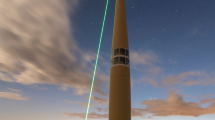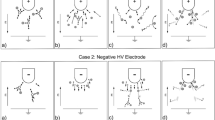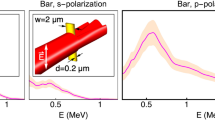Abstract
WOODING suggests1 that ball lightning is a plasma vortex ring structure produced by a process similar to the ablation of a solid surface by a high power laser pulse. A plasma vortex ring structure requires a magnetic field; here I present two pieces of evidence to show that a magnetic field is associated with ball lightning, and which may help to confirm this hypothesis.
This is a preview of subscription content, access via your institution
Access options
Subscribe to this journal
Receive 51 print issues and online access
$199.00 per year
only $3.90 per issue
Buy this article
- Purchase on Springer Link
- Instant access to full article PDF
Prices may be subject to local taxes which are calculated during checkout
Similar content being viewed by others
References
Wooding, E. R., Nature, 239, 394 (1972).
Mühleisen, R., Kosmos, 68.4, 159 (1972).
Nichols, J. R., Bells Thro' the Ages, 277 (Chapman and Hall, London, 1928).
Author information
Authors and Affiliations
Rights and permissions
About this article
Cite this article
BLAIR, A. Magnetic Fields, Ball Lightning and Campanology. Nature 243, 512–513 (1973). https://doi.org/10.1038/243512b0
Received:
Issue Date:
DOI: https://doi.org/10.1038/243512b0
This article is cited by
-
A lightning-associated phenomenon and related geomagnetic measurements
Nature (1982)
-
Ball lightning as electromagnetic energy
Nature (1976)
-
Can Ball Lightning Exist in a Vacuum?
Nature (1973)
Comments
By submitting a comment you agree to abide by our Terms and Community Guidelines. If you find something abusive or that does not comply with our terms or guidelines please flag it as inappropriate.



